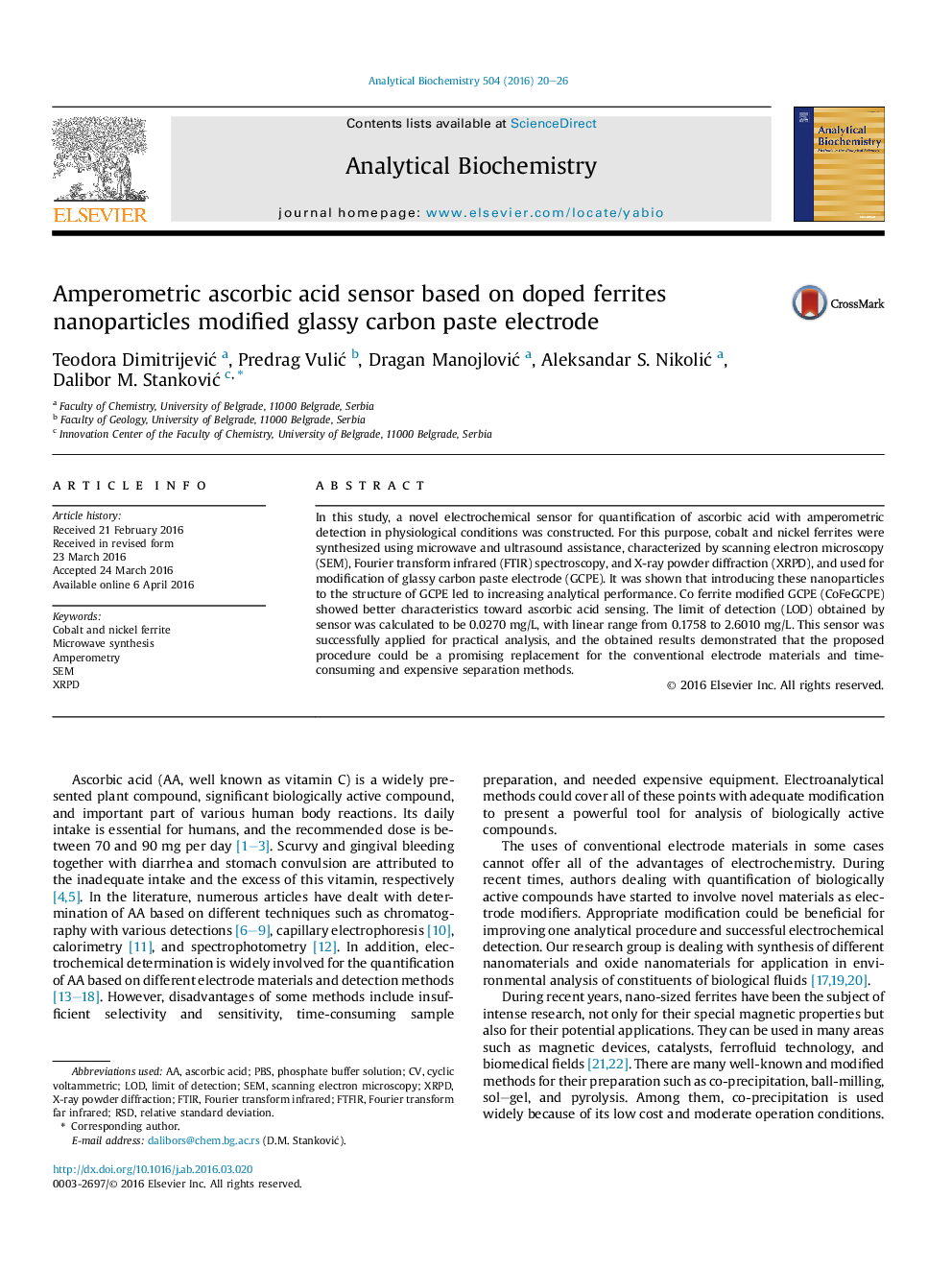| Article ID | Journal | Published Year | Pages | File Type |
|---|---|---|---|---|
| 1172932 | Analytical Biochemistry | 2016 | 7 Pages |
•Ascorbic acid was determined using modified electrode.•Effect of transition metal in ferrite structure was investigated.•Better results were obtained with cobalt ferrite.•Satisfactory characteristics of the novel electrode toward ascorbic acid oxidation were achieved.
In this study, a novel electrochemical sensor for quantification of ascorbic acid with amperometric detection in physiological conditions was constructed. For this purpose, cobalt and nickel ferrites were synthesized using microwave and ultrasound assistance, characterized by scanning electron microscopy (SEM), Fourier transform infrared (FTIR) spectroscopy, and X-ray powder diffraction (XRPD), and used for modification of glassy carbon paste electrode (GCPE). It was shown that introducing these nanoparticles to the structure of GCPE led to increasing analytical performance. Co ferrite modified GCPE (CoFeGCPE) showed better characteristics toward ascorbic acid sensing. The limit of detection (LOD) obtained by sensor was calculated to be 0.0270 mg/L, with linear range from 0.1758 to 2.6010 mg/L. This sensor was successfully applied for practical analysis, and the obtained results demonstrated that the proposed procedure could be a promising replacement for the conventional electrode materials and time-consuming and expensive separation methods.
Graphical abstractFigure optionsDownload full-size imageDownload as PowerPoint slide
